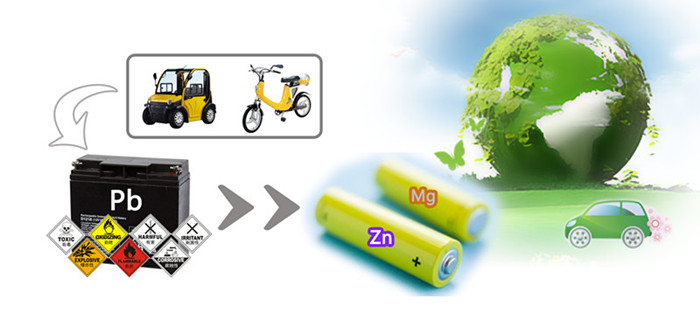There has been a strong global incentive to develop electric vehicles, as a move to reduce oil dependence and mitigate green gas emission. Especially, because of mobility and low use costs, the low-speed electric vehicle (LSEV) revolution has exploded in rural and suburb areas of China.
Due to the advantages of low cost and mature technology, lead-acid batteries managed to dominate market share of the LSEV power source. However, because of concerns over high toxicity and negative environmental impact of scrap lead, China government has issued new regulations on the gradual replacement of the lead-acid batteries in LSEVs.
Although lithium-ion batteries have been widely used in portable electronic devices, the increasing cost and limited resources of lithium may restrict their further application. Thus, the development of the low-cost batteries based on new energy storage chemistries is highly urgent.
Under the guidance of Academician CHEN Liquan,
Qingdao Industrial Energy Storage Research Institute(QIESRI) form Qingdao Institute of Bioenergy and Bioprocess Technology (QIBEBT), Chinese Academy of Sciences (CAS), discovered that highly concentrated aqueous electrolytes can optimize the Zn stripping/deposition processes and creatively proposed a smart cooling-recovery function by using a thermoreversible hydrogel as the functional electrolyte, which can repair the interfacial failure during cycling (
Angew. Chem. Int. Ed., 2017, 56, 7871;
Electrochem. Commun., 2016, 69, 6;
ACS Appl. Mater. Interfaces, 2015, 7, 26396).
Based on preliminary progress in basic research and the technological development, QIESRI had broken through the technical bottlenecks of Zn batteries in the pilot-scale research and successfully developed new types of Zn batteries with high safety, energy density up to 40 Wh/kg, cycling life up to 500 times and cost less than 0.7 ¥/Wh, which are promising for the applications in the LSEVs, large-scale energy storage and flexible electronic devices.
In addition, QIESRI made the first attempt to design and synthesize boron-centered-anion-based Mg-ion electrolytes characterized by high ionic conductivity, non-nucleophilicity, and wide electrochemical window. The formation energy and phase transformation of the discharged intermediates are extensively investigated to understand the Mg-ion storage mechanism (
Adv. Energy Mater., 2017, 1602055; Small, 2017, 1702277;
Electrochem. Commun., 2017, 83, 72;
J. Mater. Chem. A, 2016, 4, 2277). These scientific advances provide potential benefits and new research directions for future low-cost secondary Mg batteries.
These prospective researches on the rechargeable Zn and Mg batteries are highly in compliance with the lead-free trend in the LSEVs and corresponding low-cost applications. It would make important technical contribution for the green development of industry in China.
The related findings were funded by the China National Funds for Distinguished Young Scientists of the National Natural Science Foundation of China (No. 51625204), the Think-Tank Mutual Fund of Qingdao Energy Storage Industry Scientific Research, and “135” Projects Fund of CAS-QIBEBT Director Innovation Foundation
.
 Figure: Low-cost Zn and Mg batteries (Image by CUI Guanglei and ZHAO Jingwen)
Figure: Low-cost Zn and Mg batteries (Image by CUI Guanglei and ZHAO Jingwen)
